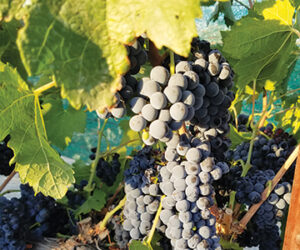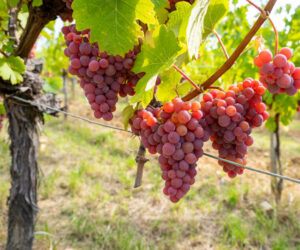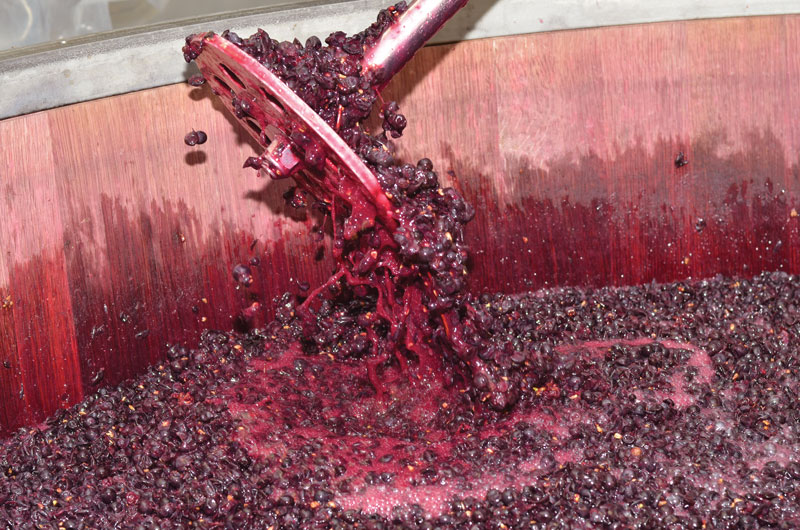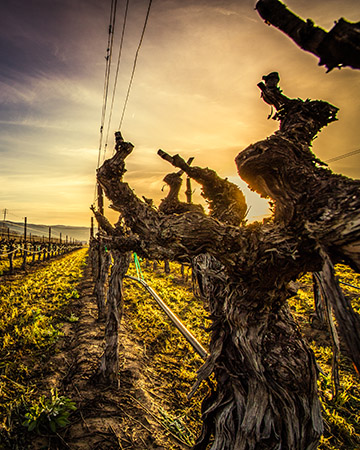
If you ask a group of winemakers to name a quintessentially “American” grape, more often than not the answer will be Zinfandel. That’s only one reason this variety should be in American winemakers’ arsenal. Another, according to our winemaking experts, is Zinfandel’s tremendous versatility. You want to make a light, fruity red for summer? Zinfandel can do it. You want a powerful, high-alcohol red? We’ve got you. It can also make rosé, including, but not only, the sweet and somewhat notorious “white Zinfandel.” You can even make Port-style wine out of Zinfandel grapes.
Among these different versions, it’s Zin’s red identity that really shines. The red wine flavors are like no other, including that jammy, exotic spice aroma. “Liquid American cherry pie,” is how one of our winemakers describes it.
That’s plenty enough good reasons why we’d like to show you how to make it. But, another one: WineMaker’s 2025 conference is in Sacramento, California, this May. That’s just a short drive from Lodi, the region responsible for most of the Zinfandel in the U.S.A., including a huge portion of juice and concentrate made available to home winemakers.
We’ve gathered some leading Zinfandel winemakers in Lodi to show you how to come to grips with this unique red variety.
Lodi: California’s King of Zin
More Zinfandel is grown in the United States — predominantly in California, and much of that in Lodi — than anywhere else on the planet. This thin-skinned red grape is genetically the same as Italy’s Primitivo, with likely origins in Croatia. However, for the modern winemaking world, Zin’s champion is California.
According to the California Department of Food and Agriculture (CDFA), about 40,000 acres of the grape were growing in California in 2023. The Lodi Winegrape Commission says nearly half that amount is grown in Lodi.
Like Cabernet vines in Bordeaux or Sangiovese grapes in Italy’s Tuscany region, Zinfandel really thrives in Lodi’s hot Mediterranean climate. In recent years, increasing numbers of top-rated versions have come from this often underrated wine growing region in the Central Valley.
Berghold Vineyards Estate and The Gentleman Farmer
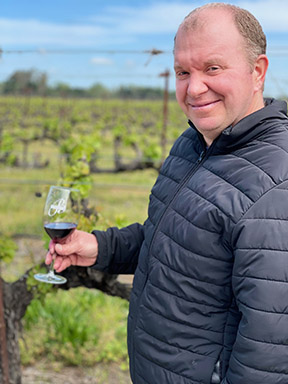
Miles Berghold runs family-owned Berghold Vineyards Estate in Lodi with his wife, Julia. About 80 acres of vines are planted, including Zinfandel that has grown here since the mid-1980s. Miles does all the winemaking while Julia runs the business, including a tasting room known for an extraordinary collection of American Victorian Antiques.
“I’m an Old World winemaker with a New World flare,” says Berghold. “We take what nature produces and only intervene when necessary or if I see a window where I could enhance the natural product.”
He has another way to describe the family operation: “We are kind of like gentlemen farmers. We don’t own a tractor. Berghold hires a company to do the mowing and hedging, gets a little help during harvest time and, he says, employs a jack of all trades to help him inside the winery.
His winegrowing approach is based on Lodi Rules. This sustainable agricultural program advocates, among other things, minimum use of chemicals and caring for the environment.
Berghold describes Zinfandel grapes as being extremely versatile. “It can produce the entire spectrum of wine types, from a phenomenal dry rosé to an unforgettable Port,” he says, going on to compare a quality Zinfandel to “liquid American cherry pie.”
Lip-smacking Zin from Van Ruiten Family Winery
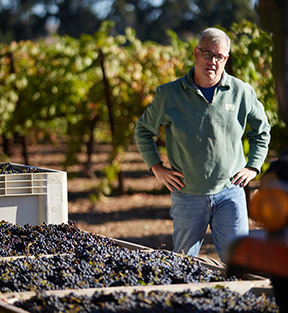
This year, veteran winemaker Duane Dappen brought in his 40th harvest. Most of those, he says, were at wineries in Napa Valley, but since 2021 he’s been the proud Winemaker at Van Ruiten Family Winery, which is about seven miles east from the Berghold operation, on the other side of Lodi.
The original owner, John Van Ruiten Sr., was a Dutch immigrant who bought a farm here in the early 1950s, including an old Zinfandel vineyard. The operation is now 800 acres of vines. Like Berghold, Dappen praises Zin’s versatility. “It’s a grape that can be made into many styles and still be a really nice wine — everything from a rosé to a Port,” he says, as if reading off the same cue card as Berghold. “It’s probably the closest thing the United States has to a historic grape because, while it has genetic ties back to Europe, it’s become its own thing here.”
Dappen aims to make a fruit-forward Zin that’s varietally correct with elegance and balance, and offers a lip-smacking description of the fruity and spicy characteristics that capture the magic of a great red Zin.
“It’s got a lot of berry aromas like blackberry, raspberry, and strawberry,” he says. “It can have spice, like some nutmeg or cardamom, and sometimes it has black pepper.”
Feeding into that cultural theory is a more social one: It’s a great match for the food Americans eat. “Not just your restaurant food, but your regular food that you eat at home,” he says.
However, Zin’s versatility for a winemaker can also bring challenges in the marketplace. Dappen says the number of styles can create confusion and work against the grape. For example, Dappen says if a customer encounters a style they don’t like they could close their minds (and mouths) to other Zinfandel versions that could be exactly what they prefer.
“Quintessentially Californian” Zin from St. Amant Winery

At St. Amant Winery, Stuart Spencer describes his winemaking style as Burgundian, after the famed French region. He’s the second generation of the family-run winery founded by his parents, Barbara and Tim Spencer, in 1979. Spencer is also Executive Director of the Lodi Winegrape Commission.
“I hate to use the word ‘natural,’ because it takes on all sorts of connotations, but we generally apply a more Burgundian or natural approach to the winemaking process,” he explains.
Spencer has made Zin in Lodi since 1996 and describes the grape as being critically important to him. His two versions are made from vines planted between 1901 and 1944 at the Mohr Fry Ranch, just south of the town of Lodi.
Like Berghold and Dappen, he ties Zin to notions of American identity. He’d like to see winemakers “lean into it more” because, says Spencer, it’s “quintessentially Californian” and reflects the people and place where it comes from.
Spencer explains some of the chemistry behind its versatility as a red. “Lodi Zinfandel expresses itself really well at low sugars as well as high sugars,” he says.
Higher sugar levels generally lead to jammier flavors and also lower acids and higher pHs — “things that could be potentially more challenging on the winemaking side,” he says.
With lower sugars, Zins have less intensity and richness, but “prettier fruit flavors” and higher acidity, making them easier to deal with in the winery. “It really depends on the style of wine you’re shooting for,” says Spencer. His style, he says, tends to lean towards a pretty fruit expression.
Sugar-Coated Vineyard Challenges
Spencer points to challenges in the vineyard that play a role on what happens in the winery.
“Sampling Zinfandel is very difficult,” says Spencer. “There’s a huge variability across the cluster, across the vine, and across the vineyard, and so getting an accurate read on a sampling is really tricky.”
Dappen also says this uneven ripening is something to look out for.
“You could have beautiful, red, ripe, dark grapes, some that are still light red and just finishing veraison, and some that are raisins — all on the same cluster,” he says.
Raisins can present serious issues. “If you get more raisins than you thought, all of a sudden you are going to have a whole lot more sugar and then you start getting super high alcohol or stuck fermentations,” says Dappen.
One way around that is careful grape sorting. Spencer, at St. Amant, sorts grapes as they’re picked to remove greener grapes and raisins.
Zin grapes can be very high in sugar anyway – 28 or 29 °Brix is not uncommon – and these sugar highs make deciding a Zin harvesting date tricky. The levels in ripening grapes can move upwards very quickly.
“You could potentially see a 4 to 5 °Brix jump in a week when the temperature gets really hot,” says Spencer.
To get around this, Spencer says he starts harvesting early and does multiple pickings.
“We may pick the same vineyard block four times over the course of two to three weeks,” he says. “I’ll usually start with my first picking somewhere around 23 °Brix and I’d love to have the later pickings wrapped up by the time it’s coming in at the crusher at 25.5 °Brix.”
Uneven ripening isn’t the only thing to watch out for. Another vineyard challenge Berghold points out is exploding grapes. “Zinfandel is pretty forgiving but it’s also a pain in the ass,” he says. “It’s extremely sensitive to water.”
His vines tend to absorb water and shoot it straight to the berry, which means the cluster size will keep growing unless you’re very careful with the water volumes. Over-watered vines will result in large, table-size grapes that explode, potentially producing rot.
Chemistry and Phenolics
Partly because of the sugar challenge and the range of sugar readings across different grapes in the same vineyard, Spencer doesn’t focus too heavily on grape chemistry until after the grapes are in the winery. “We don’t do full samples into the lab until day two of fermentation,” he says.
At the crusher, Spencer says pH readings of his harvested grapes can span from 3.5 to 3.9,. He hopes to finish with a pH around 3.6 to 3.7.
All three winemakers base their harvest timing more on phenolic flavors than chemistry.
“I’m looking for the overall picture of ripeness versus a specific chemistry profile,” says Berghold. “So the dark cherry fruit-forward flavor notes along with a hint of pepper.”
The seeds are also an important indicator. “I want the seeds ripe and brown colored with the pulp coming off,” says Dappen. “It’s more about physiological ripeness than worrying about pH and TA (titratable acidity).”
Zin “Soak Ups”
The potentially powerful and divergent sugar levels in Zin can lend character to the wines but take careful management in the vineyard and winery. Spencer says once you start the winemaking process, something else about Zin grapes can dramatically push sugar levels upwards.
“Zinfandel is notorious for soaking up because of the uneven ripening and you get sugar bound up in the skins as it dehydrates,” he says.
This sugar in the skins gets released during the winemaking process, causing a “soak up,” or rise in sugar levels.
“You could see anywhere from a full °Brix to 2–3 °Brix soak ups,” warns Spencer. If that additional sugar pushes the Brix up to 28 or 29 it creates
new challenges.
Spencer’s multiple pickings, starting early, is one tip to avoid that issue. “Because we’re doing multiple pickings, we end up with about nine different lots each harvest of Zinfandel,” he says. “Each tank will become a separate lot and will be treated slightly differently.” After fermentation, blending is the key to a balanced wine.
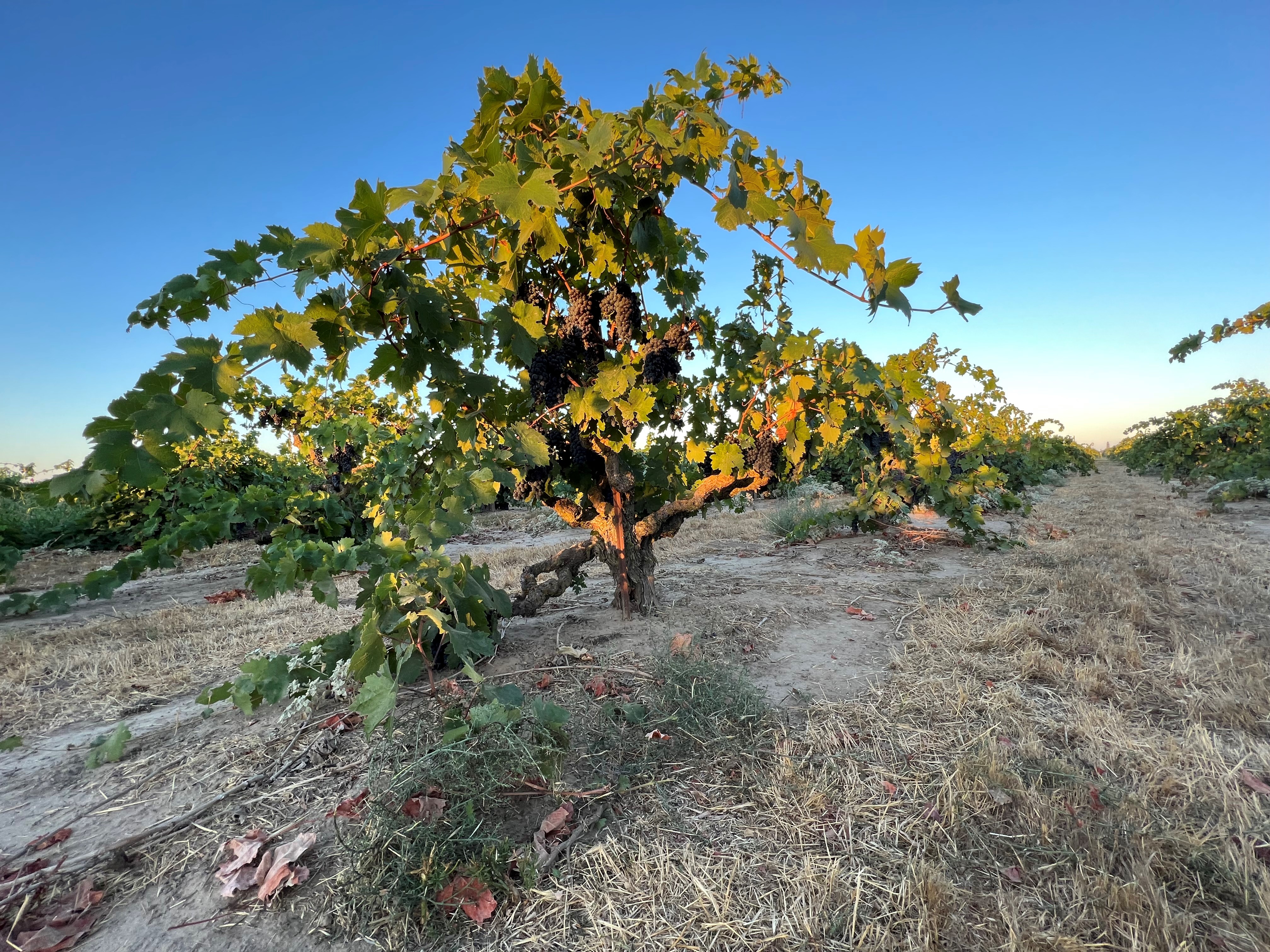
Too Hot to Handle
Zin grapes can have high sugar levels and that can cause stuck ferments and alcohol levels that are unpleasantly hot on the palate. Successfully managing the high alcohol challenge, according to our winemakers, is one of the arts of making Zin.
“I live in Lodi. We’re a warmer climate, and we get an abundant amount of sugar,” Berghold says. “So there has to be that New World winemaking technology to use.” He says he doesn’t “hyper fixate” on sugar levels, but like other winemakers, he will take steps to reduce alcohol if he needs to.
There are very expensive dealcoholizing machines that use either vacuum distillation or reverse osmosis — but they are out of financial reach for many winemakers. Another relatively common technique is adding some water. For Berghold, this involves slightly diluting the must very early in the winemaking process, according to a dilution formula.
“I’m taking free run juice out of there and I’m adding back water so I’m not upsetting the chemistry of the fruit,” he says. “I’m not diluting the tannins or the phenolic compounds.”
Berghold says this method can help bring alcohol levels down by about half a percent to what he regards as the “realm” of Zin: 14.8 to 15% alcohol by volume.
Dappen also adds a small amount of water if Brix levels need correcting, with the aim of making a balanced wine. Spencer agrees that watering back in small amounts of less than 5% volume doesn’t significantly affect flavors. He isn’t a big fan of this method, but says sometimes it is necessary. For example, if Brix was to jump by about 5 °Brix in a week from a reasonable 25 °Brix to 30 °Brix, which he says can happen, watering back may be the best solution.“If you get stuck in that situation then you need to water back some in order to have a fermentation that will go dry,” says Spencer. As a home winemaker who may not have control of harvest timing, this is a method that may make or break your homemade Zinfandel.
Destem Only or Lightly Crush?
At St. Amant Winery, the grapes are harvested in the morning cool and then destemmed into tanks. Crushing isn’t necessary for his grapes, says Spencer, because Zin is relatively thin-skinned and the destemming process is enough to break the skins and release the juice.
Then it’s a three-day cold soak, which Spencer says is standard across all his reds. Tanks are kept at 58 °F (14 °C) during this phase.
It’s similar at Van Ruiten.
“I don’t crush them because with their soft skins they’ll open up anyway,” says Dappen.
But the cold soak is shorter. “I set the chiller, add some SO2, and usually let them sit for about a day or two in a cold soak,” he says.
Berghold likes to lightly crush the grapes and destem. “It’s just basically breaking the skin of the berries so I get a bit more free run out of it,” he says.
The light crushing helps with extraction and Berghold believes additional liquid in the tank results in a more even temperature distribution across the must. His cold soak is usually about three days, sometimes longer.
All three winemakers are also running their lab tests during the cold soak. “I’ll run lab reports for pH, TA, ML (malolactic), glucose and fructose, as well as nutrients, to see what adjustments are needed to achieve the wine chemistry I’m looking for,” says Berghold.
On day three, Spencer lets the temperature in his steel tanks rise to 72 °F (22 °C). “Depending on the lot, some of it we will let ferment naturally, and some of it we inoculate,” he says. “For a natural ferment, I slow it down to 58 °F (14 °C) and then turn the temperature up to 72 °F (22 °C) on day three, but it can almost be day five, six, or seven before you really start to see some fermentation activity.”
Berghold ferments a little warmer. “I ferment at 78 °F (22 °C), and I try to avoid under the cap getting higher than 86 °F (30 °C) in order to retain the fruit characteristic,” he says.
Dappen’s ideal fermenting temperature is in between. After cold soaking for a day or two, he allows the temperature to rise naturally, resulting in a must usually maxing out around 83 °F (28 °C).
“That gets me warm enough to get some good extraction but it’s also cool enough that there’s some skin contact time,” says Dappen. “If you get too hot, then you get dry super fast.”
From cold soaking to the end the primary fermentation often takes about 14 days for all three winemakers. But the primary fermentation’s duration alone can vary quite a lot and ranges from seven days to two weeks.
Yeast Selection
“Lately, I have been favoring BM4x4,” says Dappen. “It brings out the fruitiness, but it’s got some strength to make sure it finishes, because Zinfandels end up being 14.5 to 15.5% alcohol, which is my favorite range.”
He says this alcohol level reflects a ripeness with “good flavors,” but won’t be super hot. This yeast can be found online in 8-gram packets from Lallemand. BM4x4 consists of two yeasts, one sourced from the famed Italian wine region, Brunello di Montalcino for aromatic complexity “that isn’t a super duper strong fermenter so it has a second yeast in it that’s a little stronger,” Dappen says.
Spencer uses ICV D21 and D80, also Lallemand yeasts that are available in small packets.
“Partly, I’ve just had good luck with those fermenting Zinfandel to dryness and I also like the fruit presentation they give,” he says.
For Berghold, yeast selection can be determined by practical considerations as much as the promised taste or aroma impacts of a particular strain. He often uses D254, D80, or ICV D21, which, again, are all available in home winemaking quantities. Berghold says the yeast choice can depend on how fast a fermentation he wants and also the nutrient load of the fruit.
“Those yeasts are all, roughly speaking, in the same family,” says Berghold. “I take an overall feel for what’s going on in the winery, what nutrient load I have in the fruit itself, and how aggressive I need it to ferment,” he says. For example, if it’s October and outside temperatures are falling, he’ll choose a more aggressive yeast to make sure it generates some heat and doesn’t get stuck.
Pressing
Berghold does an extended maceration during his fermentation and says he aims to reach -1 to -1.2 °Brix. During fermentation, each of these winemakers perform regular pumpovers. The degree of must extraction and “overall gut feel” are what determines Berghold’s press timing. Using a 2.5-hour press cycle, he puts the free run juice through the press first. However, he says Zin can be “a pain in the butt” to press because sometimes it turns to a mush and can clog the press.
“But that’s part of cap management and understanding the cap,” says Berghold. “So I work pretty hard on extraction with the fruit I have and if the cap or skins haven’t completely fallen apart, I don’t mind extended fermentation and maceration.”
This can extend the process by five or six days. One consideration here for other red wines would be ending up with astringent flavors because of excessive extraction. Berghold says this isn’t an issue.
“Zinfandel doesn’t tend to have a whole lot of tannin in it,” he says. “So I’m not worried about seed tannin, or about it getting too tannic like a Cabernet or a Merlot.”
Spencer — because of the mushy skins issue — usually starts pressing a little earlier than Berghold.
He says pressing generally happens between 2 °Brix and dry. “Some of that’s driven by logistics in the winery too,” says Spencer. “It’s a general press and we’re not separating press from free run.”
Pressing is where the “soaking up” sugar issue can bite. “Sometimes if you’re pressing Zinfandel and there’s still some sugar, you’re going to see the sugar bump up because you’re squeezing the skins,” Spencer says. “This seems to happen more with Zinfandel than some other varieties.”
Spencer says pressing when there’s still sugar in the skins can release an additional 1.5 °Brix. “It’s one of the reasons I generally like to press when there’s still a little fermentation activity going on, just to make sure that it finishes out,” he says. Though, keep in mind, home winemakers using basket presses will be applying much less pressure on the skins, so they may not see the same type of sugar spike.
Dappen uses a fairly standard, gentle red wine press cycle for Zin. “I’m generally pressing below zero and it’s still fermenting, so it’s pretty close to dryness,” he says.
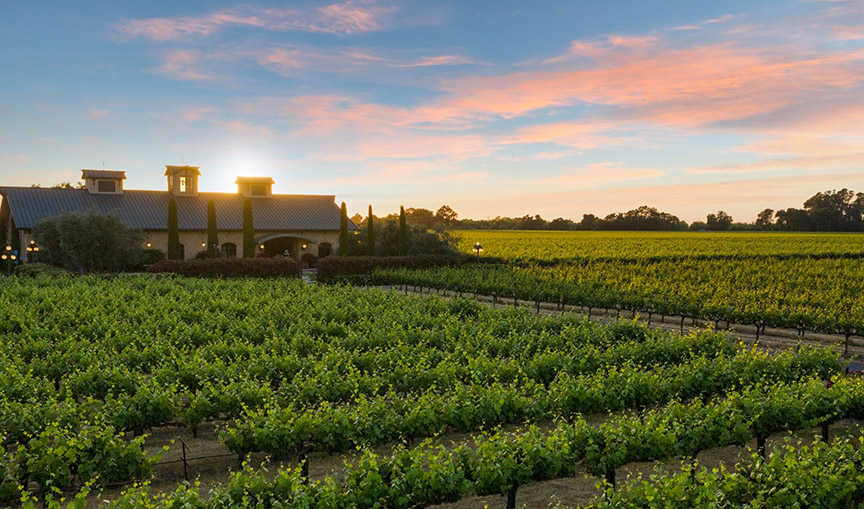
ML Conversions
Dappen begins malolactic fermentation immediately after pressing. “I can put the malolactic in then because it’s still got some warmth from fermentation to help the malolactic get started,” says Dappen.
He believes doing a malolactic fermentation when there’s residual sugar poses a risk that the volatile acidity (VA) can go up. Berghold is also wary of sugar before he inoculates for MLF.
“After primary fermentation is finished, I press off and place into a separate tank, run labs to ensure the wine is dry, then rack wine off the heavy lees and inoculate for MLF,” he says. His MLF usually takes two to three weeks.
Spencer allows a natural MLF. “We do all natural malolactic and sometimes it goes pre-barrelling, sometimes it goes in barrels,” he says.
Barrels
The winemakers then allow their wine to settle and completely finish any remaining fermentation. For Spencer, that can take three days to two weeks. Then it’s racked into barrels.
“We use a combination of French and American oak,” says Spencer. “The new oak component in the Zinfandel is very small, so probably no more than 5–10% in total for any of the premium wines we do with the balance being in barrels that are ideally 3–5 years old.”
The wines usually age in barrel 10– 11 months. Spencer prefers “relatively neutral barrels,” but not old barrels. Barrels pushing seven or eight years old, he says, can have a homogenizing effect on the wine that spoils its “pretty fruit flavors.”
He suggests this homogenizing impact could be a result of less oxygen exchange caused by an aging barrel’s reduced porosity.
Berghold uses barrels that are about 40% new American oak for nine months, being racked two or three times during the barrel-aging period. He’s a fan of oak and says there’s a reason barrels have been used for hundreds of years. “My philosophy is there is no substitute for aging wine in barrels because of the natural transfer of gases in the barrel, which naturally concentrates and ages the wine.”
Dappen also uses a mix of French and American oak, both old and new. “American oak contributes a lot more vanilla so that adds to the spiciness and it also gives a little more tannin structure,” he says. “French oak rounds out the middle more.”
Sulfite Additions are Light
All three winemakers are light on their sulfite additions. Spencer begins with an addition of about 40 ppm at the destemmer. “I rarely go above that unless there’s a higher level of rot or something like that,” he says. His next addition comes at the first racking.
Dappen also adds at the destemmer but his level is a little lower.
“I’m trying to hold the wines and barrels at a moderate level, 30–35 ppm, just to protect them from the bad stuff,” he says.
Berghold also goes for small SO2 additions. “I try to use the minimal amount that I can for oxidation and microbial factors,” he says.
Filtering
All three winemakers filter as necessary. “If there’s any sort of residual sugar there we’ll go through sterile filtration,” says Spencer. “If it’s microbially stable then we’ll do a light filtration just to kind of clean it up.”
Berghold uses a plate and frame pad filter to sterile filter. He says, in his experience, it’s gentler on the wine than some other filters, like a cross flow. “Filtration adds stability and longevity to the wines,” he says. “I find (the plate and frame filter) is a bit more gentle on the wine and allows the molecules to kind of move through it like a blob,” he says.
Berghold said the cross flow’s much tighter filter has caused a version of bottle shock on his wines and they can take time to bounce back from that.
Parting Advice from the Experts
Berghold says it’s important that any winemaker taking on Zinfandel has a distinct objective in mind for the finished wine. If possible, they should also understand the terroir and vineyard of their grapes. This knowledge, he suggests, will help them make the best decisions during the winemaking process.
Dappen advises Zin newbies, if they’re planning on using fresh grapes, to try and visit the vineyard to anticipate and, ideally, prevent any uneven ripening issues.
Spencer also recommends keeping a close watch on ripeness levels. “Zinfandel can get really high sugars and stuck fermentations easily and then you have real VA challenges,” he says.
He also warns against using too much new oak.
“Too much wood or too much barrel time can mask that nice charm that comes from Zinfandel,” he says.
So now it’s over to you!
First, you need to find some grapes or juice. Zinfandel grapes are usually relatively easy to source from grape suppliers across the U.S., and kit winemakers will find numerous options to choose from (many likely coming from grapes grown in Lodi). If you’re looking to get your hands on grapes, the Lodi Winegrape Commission would be a good place to start your inquiries.
Related Link:
• Want more advice on making Zin? Our profile of the “Godfather of Zinfandel” Joel Peterson of Ravenswood details his winemaking philosophy and techniques: www.winemakermag.com/article/ravenswood



